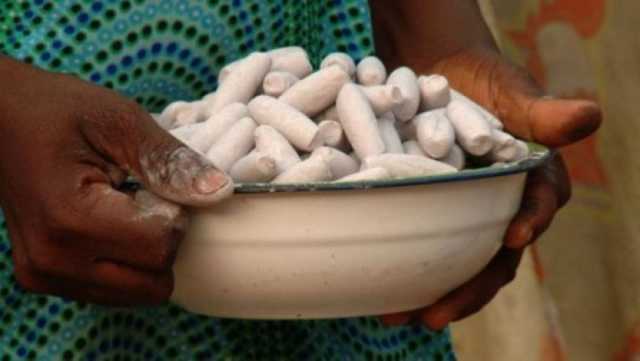Why you shouldn’t eat sand when pregnant
Many women develop cravings when pregnant. Ice cream one moment, akara the next. But some women take the cravings a notch higher—building up appetite for non-food items. It is called pica, and research shows it may be more prevalent than previously imagined. One research studied women who while pregnant ate kaolin clay (white chalk or […]

Many women develop cravings when pregnant. Ice cream one moment, akara the next. But some women take the cravings a notch higher—building up appetite for non-food items.
It is called pica, and research shows it may be more prevalent than previously imagined.
One research studied women who while pregnant ate kaolin clay (white chalk or nzu), bentonite clay (uro) and ice. The study, both cross sectional and descriptive, was done among pregnant women attending a tertiary hospital, a primary health centre and antenatal clinics in Owerri, Imo.
It found nearly 62 in 100 women ate nzu, 45 in 100 women ate uro and 32 in 100 ate ice.
Uro was most consumed, accounting for 90% of all non-food items women ate while pregnant, according to the study published in the Nigerian Journal of Nutritional Sciences.
Pica in pregnancy focuses on three major groups, based on what is eaten: pagophagia (eating ice), geophagia (eating mud) and amylophagia (eating starch).
The cause of pica is not really understood. One theory suggests ingesting non-food items relieves nausea and vomiting. Another links it to micronutrient deficiency.
The study in Owerri asked women what they thought were the benefits of eating white chalk, bentonite clay and ice during pregnancy.
Nearly 73% of them agreed it prevented nausea and vomiting. Asked whether it helps in child development, 84% of the women disagreed. Almost an equal percentage agreed or disagreed it could prevent illness. Some 81% believed it enhanced healthy skin on an unborn child, and 55% believed it enhanced birth weight.
Eating non-food items isn’t peculiar to Nigeria. Previous studies have found 60% prevalence of ice eating among pregnant women in Zahendam, Iran and 8% in Ghana.
They also found women ate clay during pregnancy in Iran, Ghana and Ethiopia.
The study, done by three experts at the department of human nutrition and dietetics at Michael Okpara University of Agriculture, Umudike, Abia, note that while consumption of ice may not be “toxic or poisonous”, consumption of half to two cups of ice daily or a few times a week has been shown to “lower blood iron in pregnant women in their second or third trimester.
The study authors also note high prevalence of pica could increase risk iron and zinc defiency in both mother and child, “as well as compromise pregnancy outcome and child development.”
It said women believed consuming non-food items prevents nausea and vomiting in pregnancy. “This calls for public enlightenment on the danger of pica in pregnancy,” the authors concluded.
